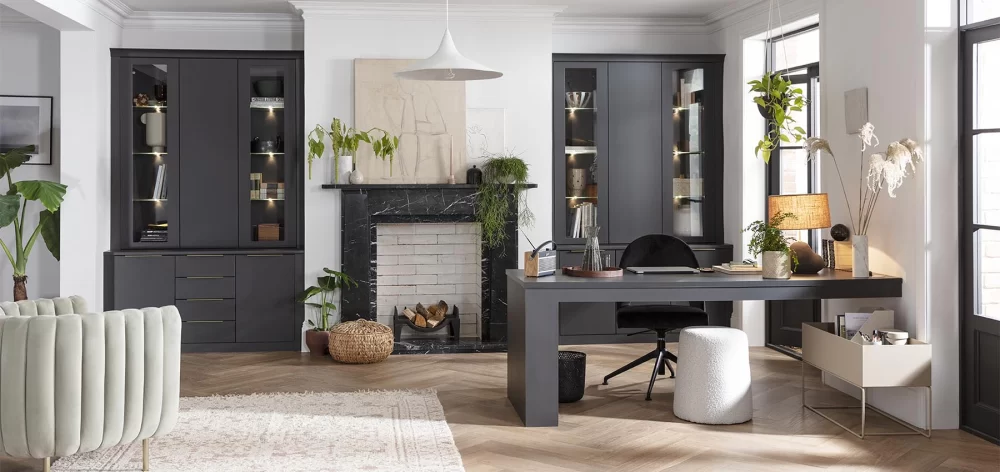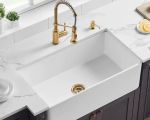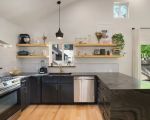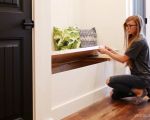
Creating a Home Office That Works for You
When I decided to remodel my home office, I knew it had to be more than just a space to work. It needed to be an environment that would boost my productivity, reduce distractions, and even serve as a space for relaxation during breaks. If you're considering redesigning your home office, you’re in the right place. A practical home office remodel can make all the difference between a cluttered, stressful workspace and one that promotes focus and creativity.
1. The Importance of Space Planning
The first step in designing your dream home office is space planning. I had a small room that served as my office, but after some thought, I realized that it wasn’t being utilized effectively. Proper space planning is crucial for creating a functional environment. Take a look around your office and ask yourself: How often do you find yourself searching for things or feeling cramped in your workspace? This is where the first changes should be made.
For me, the key was maximizing the available space. I decided to declutter, get rid of items I no longer needed, and invest in storage solutions that would keep my workspace organized. Wall-mounted shelves, a filing cabinet, and cable management solutions all played a huge role in helping me create more space and keep my desk clear for what matters most.
2. Choosing the Right Furniture for Comfort and Functionality
One of the most important decisions I made during my remodel was choosing the right furniture. This isn’t just about picking out a comfortable chair and a sturdy desk – it’s about selecting pieces that cater to your workflow and ergonomic needs. A comfortable chair with proper lumbar support is crucial, especially if you’re spending long hours in front of your computer.
When it comes to the desk, I opted for a standing desk that could be adjusted based on my needs. Sitting for long periods can cause back pain and fatigue, so alternating between sitting and standing has been a game-changer for me. It allows me to stay energized and focused throughout the day. Make sure the desk height is aligned with your eye level to avoid straining your neck. If space permits, a larger desk with additional drawers or compartments can also help keep your items organized and within easy reach.
3. Lighting for Productivity and Mood
Lighting can make or break the atmosphere in your home office. Initially, my office had a single overhead light, which didn’t provide enough brightness or create a welcoming environment. After doing some research, I realized that lighting is not only important for seeing clearly but also for creating a positive, productive atmosphere.
Natural light is always the best option, so I made sure to position my desk near a window. If you’re in a room without much natural light, consider investing in high-quality artificial lighting. Desk lamps with adjustable brightness and color temperature can help you control the lighting based on your tasks, whether it’s reading, writing, or working on your computer. I also found that having soft, warm lighting in the evening helps me wind down after a busy workday.
4. Personalizing Your Workspace for Inspiration
While functionality is key, personalizing your workspace can make a huge difference in how much you enjoy working there. I added a few items that inspire me, such as plants, artwork, and personal mementos. These not only make the space feel more inviting but also help with my creativity and motivation. A few plants can add a sense of calm and improve air quality, while a piece of artwork or a quote that resonates with you can provide a burst of inspiration during the day.
5. Technology and Tools to Optimize Workflow
In today’s digital world, technology plays a massive role in the efficiency of a home office. I realized that upgrading my tech tools was just as important as organizing my physical space. I invested in a dual-monitor setup, which allows me to multitask more effectively. Additionally, a good-quality webcam, microphone, and noise-canceling headphones are essential for virtual meetings and communication with colleagues.
Beyond hardware, consider utilizing software that can help streamline your work. Tools like project management apps, cloud storage, and time-tracking software can all contribute to a more organized and productive workday. I found that automating certain tasks and organizing my files digitally made a big difference in how quickly I could access important information and stay on top of my to-do list.
6. Creating a Space for Breaks
After hours of work, it’s crucial to have a space where you can take breaks and recharge. One of the best decisions I made was to include a cozy corner in my office. I added a small chair, a soft throw blanket, and a bookshelf filled with my favorite books. This little nook allows me to step away from my desk for a few minutes and take my mind off work. Whether it’s reading, meditating, or simply relaxing, this break space has helped me stay refreshed and avoid burnout.
7. Staying Organized with Smart Storage Solutions
No matter how much you declutter, there will always be a need for storage in your home office. I made sure to include plenty of storage options to keep my workspace tidy. For example, I installed wall-mounted cabinets for files and documents, and I used drawer organizers for office supplies like pens, paper clips, and sticky notes. A clean desk allows me to focus on the task at hand without being distracted by clutter.
If your office has limited space, consider vertical storage solutions or multi-functional furniture, like desks with built-in drawers or shelving. These space-saving ideas can help you stay organized while still having everything you need within reach.
8. Final Touches for a Cohesive Look
Once the functional elements were in place, it was time to focus on the finishing touches. Adding a few decorative elements helped bring the room together. I opted for a neutral color palette with accents of my favorite colors, such as green and navy blue. This color scheme not only looks stylish but also creates a calm and focused atmosphere.
Consider adding a stylish rug, curtains, or decorative items that reflect your personality. It’s these small details that make a home office feel like a space you want to spend time in every day. Whether you prefer a minimalist look or something more eclectic, don’t be afraid to inject your personal style into the room.
In the end, designing a practical home office remodel is all about finding what works for you. It’s about creating a space that supports your workflow, enhances your productivity, and makes you feel comfortable and inspired. Whether you’re working from home full-time or just need a space for occasional tasks, taking the time to design a home office that fits your needs will pay off in the long run.








